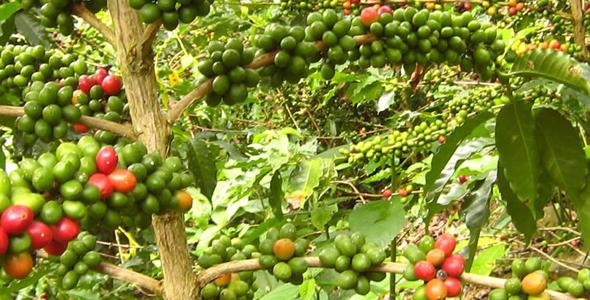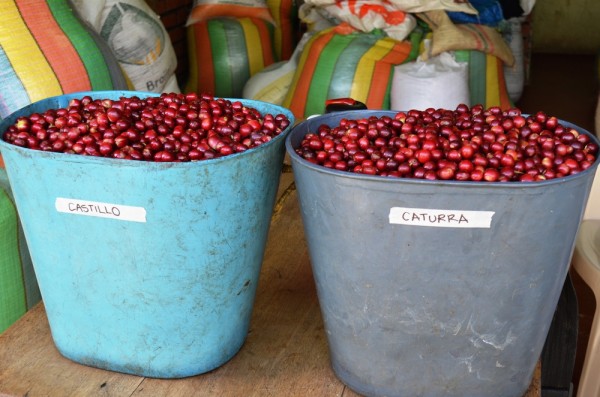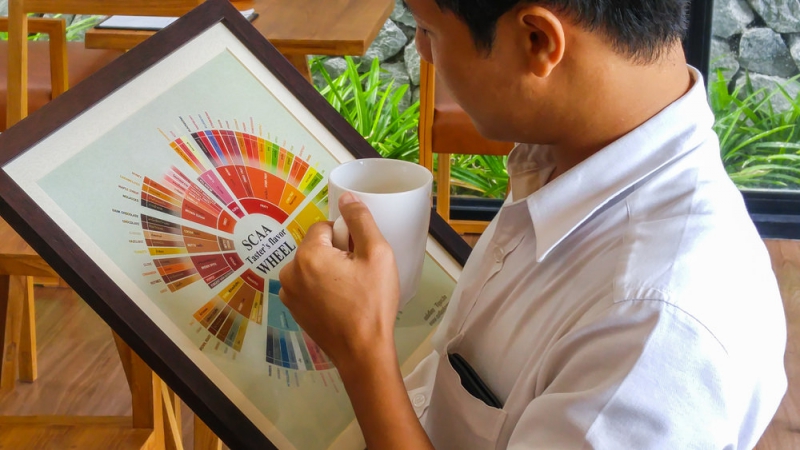A new way for scientists to identify microscopic worms attacking coffee crops

Professional coffee knowledge exchange more coffee bean information please follow the coffee workshop (Wechat official account cafe_style)
The plant that produces coffee, one of the world's most popular drinks, is the target of miniature worms, but scientists are fighting back. Due to the use of a new rapid detection method, an underestimated coffee planting problem has been found in the soil samples in the field of coffee cultivation.

Details of the method are published in the Journal of Plant Pathology, and the researchers hope their method will be used to learn more about which species live where, so growers can take mitigation measures and protect our morning brewing.
The world consumes about 2 billion cups of coffee a day. The supply of this coffee bean is challenged by two major nematode species that live in the soil and destroy the roots of coffee plants without specific symptoms.
Nematodes feed on plant roots, weakening plants and eventually leading to yield loss.
They also like bananas and black pepper plants, which are usually grown with coffee to provide a rich environment for them to grow.
A team led by the University of Leeds worked with Nestle agronomists and researchers as well as international academic colleagues to collect soil samples from plantations in Brazil, Vietnam and Indonesia. They analyzed these samples to identify DNA from worms and found that they were anywhere at destructive levels.
The problem of nematode worms in coffee crops has previously been reported, but this is the first molecular study to evaluate plant parasitic nematodes in coffee fields by sampling multiple crop plants from three major coffee-producing countries.
"We have found extensive evidence of these parasites," said Peter Urwin, a professor of plant nematode in the Department of Bioscience at the University of Leeds. The exact species vary from country to country and soil samples, and I can tell the difference between Vietnam and Brazil or Indonesia. The sad truth is that no matter which sample we take, we will find that plant parasitic nematodes do great damage to coffee crops. "
The average life span of a coffee factory is 20 years, which is a major investment for farmers. They are sometimes grown with bananas and black pepper, creating a wider range of sources of income, but may complicate the problem. One mitigation method, the researchers say, may be to separate the crops, so if one person is infected, others will not be threatened.
Professor Urwin added: "in vineyards, growers often plant insect-resistant but not ideal grapes and then 'transplant' the preferred grape varieties to grapevines to prevent root parasites. Once we better understand which parasites attack which coffee crops and which coffee plants are resistant, this method may be the grower's choice. "
The work is done by the doctor. Researcher Christopher Bell. "We are shocked by the number of parasites found in the sample and hope that our method will be accepted by others so that we can better understand the problems we face," he said. In the end, farmers and growers should benefit from this work and take appropriate mitigation measures. Action ".
Important Notice :
前街咖啡 FrontStreet Coffee has moved to new addredd:
FrontStreet Coffee Address: 315,Donghua East Road,GuangZhou
Tel:020 38364473
- Prev

Coffee production from the perspective of Colombian coffee: should farmers pursue quality or quantity?
Professional coffee knowledge exchange more coffee bean information please follow the coffee workshop (Wechat official account cafe_style) boutique coffee in the most important discussion? Will coffee beans with a score of 85 or higher based on SCAA get a higher price because of their quality? Those who need special processing technology, careful sorting and selection of coffee beans after harvest.
- Next

What if I can't drink the coffee flavor described on the label? How to build your own taste memory?
Professional coffee knowledge exchange more coffee bean information Please follow the coffee workshop (Wechat official account cafe_style) I believe that many novices will have such an experience: when they meet a group of experienced coffee lovers zhuang bi with baristas in a coffee shop, they always see an adjective, what is the aroma when it is hot, and when it is cold?
Related
- Why are the coffee in some coffee shops not enough after being frozen? What should I make up for my American latte cappuccino coffee after being frozen?
- How much water does it take to steam coffee by hand? Why is the coffee brewing and steaming time 30 seconds? What is the purpose of steaming coffee?
- The suspected drink contains too much caffeine! Overlord Tea Lady responds urgently!
- Starbucks rejects antique paper coupons?! Netizen: Missed marketing opportunities!
- What ratio of water temperature and ground does the smart cup method use to press coffee? The difference between brewed coffee and filtered coffee?
- What is the standard process for the purpose of coffee cup testing? What is the difference between hand-brewed coffee and cup testing?
- How to use hand-brewed coffee paragon small golden balls? How does cold coffee lock in the aroma of coffee?
- Is American coffee black? What is the difference between American coffee and drip coffee?
- Unexpected! Well-known tea beverage brand Lele Tea will withdraw from the Zhengzhou market!
- Starbucks enters the fashion and beauty industry?! Netizen: Give me an ice American eye cream

